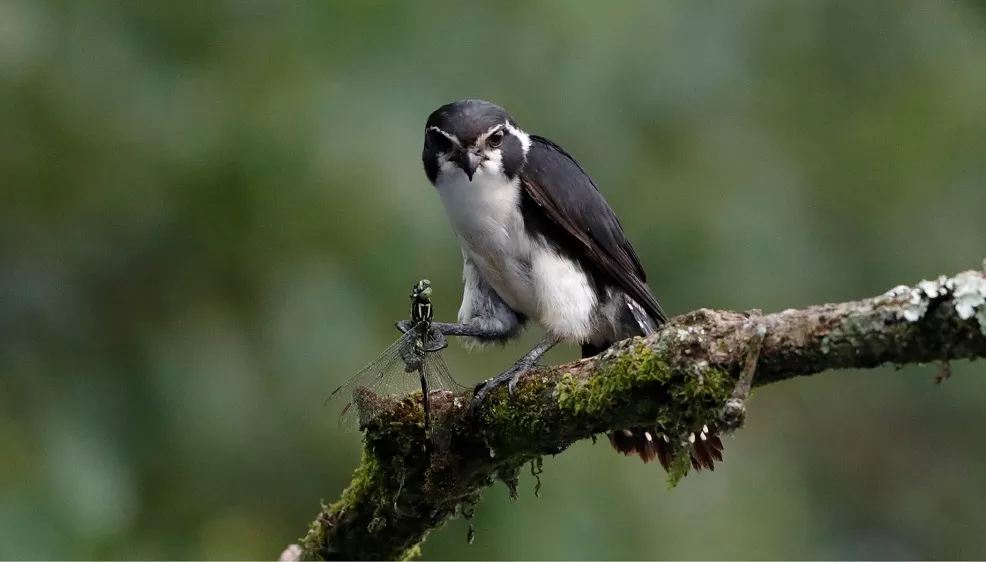The Pied Falconet (Microhierax melanoleucos) is a captivating bird of prey belonging to the Falconidae family. Known for its diminutive size and striking black-and-white plumage, this raptor is native to Southeast Asia. In this article, we will explore the unique characteristics, habitat, behavior, and conservation status of the Pied Falconet, shedding light on its significance in the avian world.
Physical Characteristics:
Size: The Pied Falconet is one of the smallest raptors, measuring approximately 14-18 centimeters (5.5-7 inches) in length and weighing about 30-40 grams (1-1.4 ounces).
Plumage: Its distinctive coloration consists of black upperparts with white underparts, including the breast and belly. The head displays a black cap, contrasting with a white face and throat. Males and females exhibit similar plumage.
Distribution and Habitat:
The Pied Falconet is native to various countries in Southeast Asia, including Thailand, Cambodia, Laos, Vietnam, Myanmar, Malaysia, and Indonesia. It primarily inhabits lowland and foothill forests, secondary growth forests, and wooded areas adjacent to agricultural lands.
Behavior and Hunting Techniques:
Hunting: As an agile and swift hunter, the Pied Falconet relies on its exceptional flight skills to catch prey. Its diet mainly consists of insects, small birds, lizards, and occasionally, small mammals.
Perch and Ambush: It employs a perch-and-ambush hunting strategy, scanning the surroundings from high perches and swooping down swiftly to capture prey in mid-air or on the ground.
Vocalizations: Pied Falconets communicate through a series of high-pitched, whistling calls, particularly during courtship displays or territorial disputes.
Breeding and Conservation:
Breeding Behavior: Pied Falconets form monogamous pairs during the breeding season. The breeding season for the Pied falconet varies by region, but it typically occurs between January and May. The bird builds its nest on a tree branch, usually near the trunk or in a fork of the branch. The female lays 2-3 eggs, which are incubated for around 30 days by both parents. The chicks fledge after about 30-35 days and become independent after another three weeks.
Conservation Status: The Pied Falconet is categorized as a species of “Least Concern” on the IUCN Red List. However, habitat loss due to deforestation and other human activities poses a potential threat to their populations. Conservation efforts focus on protecting their natural habitats and raising awareness of their ecological importance.
Ecological Significance:
Predator-Prey Dynamics: The Pied Falconet plays a role in controlling populations of small birds, insects, and reptiles, contributing to the balance of local ecosystems.
Indicator Species: As a species sensitive to habitat changes, the presence or absence of the Pied Falconet can serve as an indicator of the overall health and integrity of the surrounding environment.
Conclusion:
The Pied Falconet, with its striking black-and-white plumage and impressive hunting skills, is a captivating bird of prey found in Southeast Asia. Despite its small size, this raptor demonstrates remarkable agility and adaptability in its habitat. As we strive to conserve and protect the biodiversity of our planet, the Pied Falconet serves as a reminder of the intricate web of life and the importance of preserving the habitats that support these remarkable avian species.


 Facebook
Facebook  Instagram
Instagram  Youtube
Youtube 